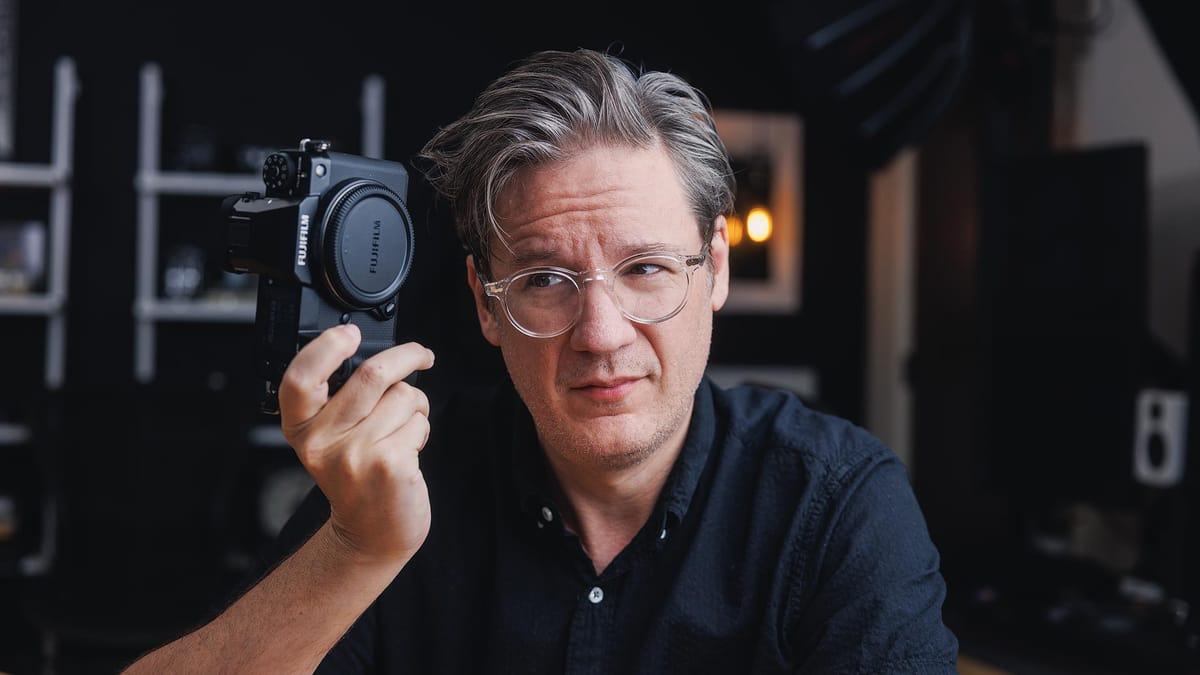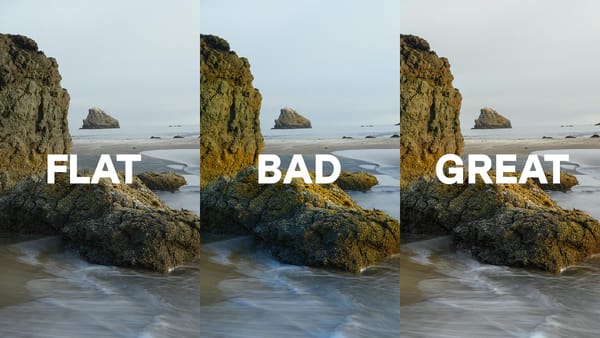Why you should not buy a Fujifilm GFX 100S II
Thoughts on the Mark II version of Fujifilm's excellent GFX 100S, and whether it makes sense for landscape photography

Switching from the Canon EOS R5 to the Fujifilm GFX 100S was one of the best choices I’ve made for my landscape photography. I still use and enjoy the R5 for general shooting and video, but the GFX 100S stands out when it comes to landscapes. Its 102-megapixel medium format sensor, wide dynamic range, incredible detail, native 4:3 aspect ratio, and Fujifilm’s film simulations (especially Provia, which I appreciate) make it a powerhouse for this kind of work.
Given this, I should be excited about Fujifilm's newly introduced GFX 100S II, which boasts a range of upgraded features and capabilities. I purchased one, but mostly because having the latest model is beneficial for producing topical content for my blog, newsletter, and YouTube channel. I'm also interested to see through real world usage in the forthcoming months how much better the Mark II truly is (which I'll share with you).
If another landscape photographer asked whether they should upgrade from the GFX 100S to the Mark II, I’d say it’s probably not worth it. From what I’ve seen so far, the Mark II doesn’t offer enough to justify the cost for most landscape shooters already using the original.
Same dimensions, same weight
I hoped Fujifilm would redesign the Mark II body to be smaller and lighter, but Fujifilm played it safe and kept everything the same. The Mark II is a hair lighter at 1.9 pounds (versus 2 pounds with the 100S), but to me it's not enough to notice a difference. Granted, maintaining the body dimensions and layout does have its benefits (familiarity, ability to re-use L-brackets and other accessories), but a lighter and slightly smaller Mark II would have been great.
The Mark II body does have a better, grippier material that feels nice and more secure when held in the hand. An improvement over the smooth finish of the Mark I, though I can see how the new material might trap more dirt when used outdoors. Will just have to wait and see.
Improved IBIS and autofocus, but it may not matter
Two of the biggest upgrades with the Mark II are its improved in-body image stabilization system (IBIS) and auto-focusing system. Fujifilm claims the new mechanical IBIS system now provides 8 stops of exposure latitude when shooting handheld, which is an improvement from 6 stops in the Mark I. More stops means better stabilization and "reasonably sharp" handheld images at slower shutter speeds without raising ISO and injecting noise.
The new auto-focusing system offers more precise focusing, more AF points, "AI-based" subject tracking, and better low-light performance. I have noticed the Mark I struggle to lock-in focus when shooting in dim light around sunrise and sunset, so this may be an improvement for some shooters.
But otherwise? If you primarily shoot landscape images with a camera mounted to a tripod, 8 versus 6 stops of IBIS won't matter. You may not care about IBIS at all, and would rather disable it to minimize vibration. Many landscape photographers also prefer manual focus for focus stacking.
Improved IBIS and AF are nice features for handheld shooters using the Mark II for portrait, sports, travel, or other forms of photography, but I doubt they will benefit most landscape photographers who primarily shoot images using tripods.
Slight bump in viewfinder resolution
The OLED viewfinder in the 100S II has been upgraded with 5,760,000 dots compared to 3,690,000 dots in the 100S. Again, a positive change that does make the digital viewfinder crisper and sharper to read data and compose images, but if you mostly use the three-way fold-out touchscreen on the back of the camera (which has not been upgraded), then an upgraded viewfinder probably won't matter all that much. I rarely use mine when shooting on a tripod.
Incrementally better dynamic range and ISO performance
For the Mark II, Fujifilm has brought over the same 102-megapixel CMOS II medium format sensor using the latest v5 X-Processor imaging engine from the GFX 100 II (introduced in September, 2023). This new sensor supports a minimum ISO of 80 compared to 100 in the 100S. This should produce images with slightly better noise performance and detail capture. According to Fujifilm photographer Jim Kasson who tested this new sensor against the older one in the 100S, dynamic range is slightly better, providing just over 14 stops of dynamic range at ISO 80.
Nice to have, but in my experience, the dynamic range of the 100S is already excellent. I especially notice the difference in skies and highlights. A slightly lower ISO of 80 versus 100 is objectively better, but in practical use, it may make little difference.
New "Reala Ace" film simulation
The GFX 100S II is the latest Fujifilm camera to receive "Reala Ace", a digital film emulation of Fujicolor Superia Reala Ace 100 color negative film (which was sold back in the 90s and early 2000s). More film simulation options are always a good thing with Fujifilm cameras (one of the big reasons why their cameras have become so popular over the past few years), but if you're a landscape photographer, odds are you're shooting raw files and processing images yourself in post, not creating finished JPEGs.
Better price
Fujifilm has been aggressively cutting prices across their GFX line since the first GFX 100 was released in 2019 with an eye-watering (and divorce causing) price tag of $10,000. The 100S was introduced two years later at $6,000, then slashed in late 2023 to $4,400 (where it remains today). The new 100S II continues this downward pricing trend with a lower MSRP of $5,000.
This has put considerable pressure on used prices for the 100S, now selling around $3,500—nearly 50% lower than its original MSRP price tag only three years ago.
Fujifilm has also been slashing prices by hundreds of dollars on their excellent GF lenses, further reducing the overall investment of Fujifilm's GFX product line. For comparison, you could purchase a full-frame Canon EOS R5 with an RF 24-70mm f/2.8 lens (a fantastic combo) for $5,000 new at retail, or a used medium format GFX 100S with a new GF 32-64 lens for around $5,300. While not a true apples-to-apples comparison, it does show how dramatically prices have fallen for Fujifilm digital medium format cameras.
Final thoughts
Overall, the new GFX 100S II does provide substantive upgrades and improvements over the previous model, but mostly for hand-held shooters who primarily use auto-focus. Otherwise, when mounted to a tripod and used for landscape photography, the 100S II is practically the same as the previous model. It feels to me like Fujifilm is using this release to further expand the user base of the GFX system by making deeper inroads into non-landscape genres of photography, which is perfectly fine. Their aggressive pricing would seem to indicate that as well.
"If it ain't broke, don't fix it" feels like the overarching theme here, for the first GFX 100S was (and still is) an exceptionally great camera capable of stunning images, incredible detail retention, and loads of creative flexibility in post when cropping 102 megapixels.
If I were switching to the Fujifilm GFX system to create landscape images, I'd be most excited to purchase a used 100S, skip the Mark II, and wait three or four years for Mark III. I wish the Mark II was a more exciting and useful upgrade for existing Mark I owners (like me), but I guess I'll have to wait for the Mark III.



